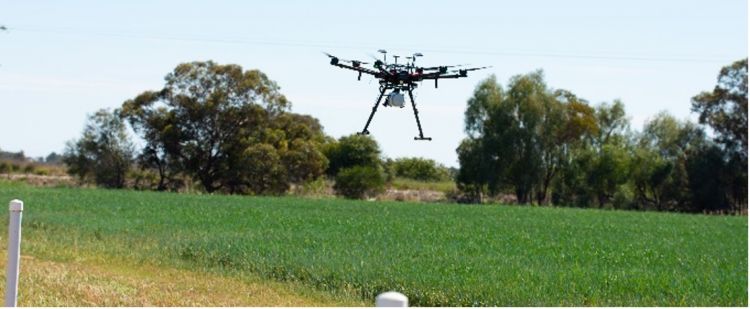What is AgTech?
AgTech, digital agriculture and the Internet of Things
AgTech, digital agriculture and the Internet of Things (IoT) are quickly becoming tools and infrastructure that are commonly used in modern agriculture and farming.
AgTech
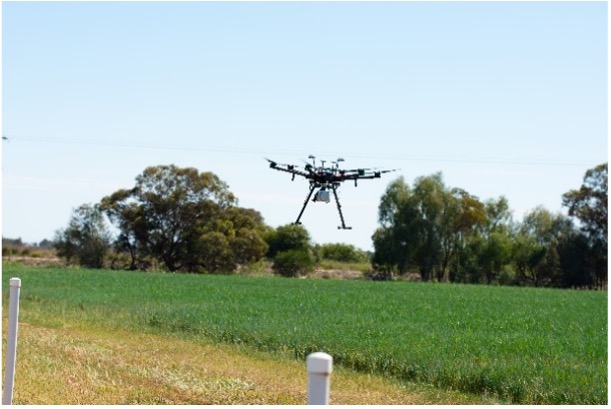
AgTech encompasses innovations in agriculture aimed at improving efficiency, profitability, sustainability, and resilience. It includes devices, sensors, robotics, automation, and artificial intelligence.
AgTech can work by itself or be part of a network of devices such as IoT, where devices can connect to and interact with one another, as well as the internet (see below).
On farms, AgTech can:
- Make decision-making easier and quicker.
- Provide more reliable and accessible information.
- Provide evidence of sustainability, improved efficiency, and increased profitability.
Examples of AgTech used on farms includes:
- Water sensors for tanks, troughs and irrigation.
- Weather stations and soil moisture monitoring.
- Gate and fence sensors.
- Electronic identification tags.
- Autonomous vehicles.
If you are investigating how AgTech could benefit you and your business, you should also read: AgTech what you need to know.
Digital agriculture
 Digital agriculture integrates various technologies to collect and utilise data across the agricultural supply chain, from the field to the consumer. It facilitates day-to-day farm management and enhances traceability, security, and automation.
Digital agriculture integrates various technologies to collect and utilise data across the agricultural supply chain, from the field to the consumer. It facilitates day-to-day farm management and enhances traceability, security, and automation.
Examples include animal monitoring through electronic identification tags, prescriptive fertilisation based on soil moisture sensors, and geospatial mapping using GPS satellites.
Internet of Things
The Internet of Things (IoT) refers to devices embedded with sensors that measure and transmit data via a network. In agriculture, IoT devices include tractors equipped with GPS for precision farming, weather stations for monitoring environmental conditions, and cattle tags with electronic identification for tracking individual animals. These devices connect and interact with each other and the internet, enabling automation and real-time data access. Farmers can make informed decisions by accessing data through interfaces or dashboards on their devices.
The data IoT devices generate is often sent to what is known as an interface or dashboard. This is where farmers access the information they need, often in real-time, to make more informed decisions. For example, the wind speed in a particular paddock or how much water is in a trough can be found out just by opening an app on a phone, saving time and providing peace of mind.
Before purchasing IoT devices for your farm business, you should consider:
- The type of connectivity needed for devices to ‘talk’ to each other and connect to the internet. The topography and location of your farm might determine what options are available to you.
- How you want to access your data and what decisions it will allow you to make.
- After sales service, subscription costs and who and how long it will take to install your devices.
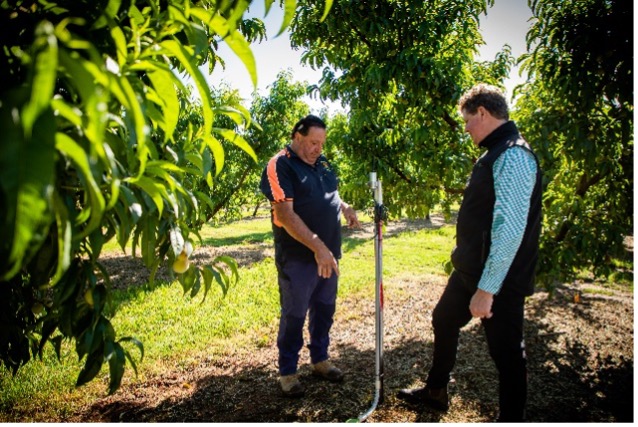

There are lots of different technologies that can be used to capture data and automate repetitive tasks. Common examples on farms include weather stations and electronic identification devices, and they all rely on three pieces of equipment:
- The sensor, any device used to collect information.
- A network to transmit the data, either wireless or wired.
- A computer or software to read the data, either remotely or on the device.
Sensors
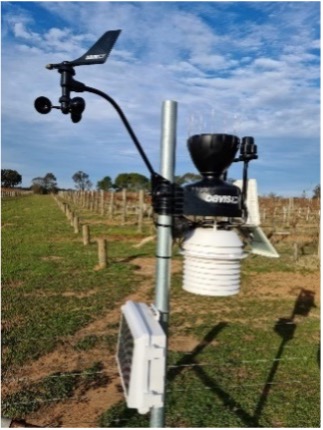 Sensing involves capturing data using various sensors such as location sensors, weather sensors, moisture sensors, and electrical current sensors. These sensors collect data on factors like GPS position, temperature, moisture levels in soil, and electric fence status. The collected data is transmitted through networks like Bluetooth or LoRaWAN to be analysed and utilized for decision-making.
Sensing involves capturing data using various sensors such as location sensors, weather sensors, moisture sensors, and electrical current sensors. These sensors collect data on factors like GPS position, temperature, moisture levels in soil, and electric fence status. The collected data is transmitted through networks like Bluetooth or LoRaWAN to be analysed and utilized for decision-making.
The data these sensors generate, or store, has little value unless it can be converted into meaningful information to support farmers with day-to-day tasks and strategic decisions to make their business more efficient and productive.
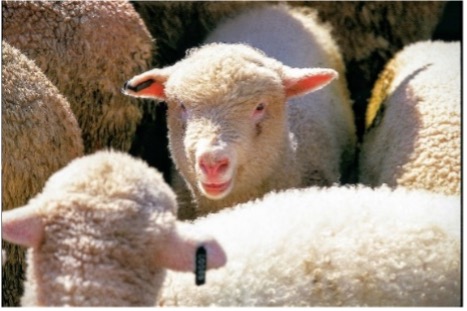
In most cases, the data must be transmitted to a device or software to be analysed. For example, electronic identification devices such ear tags on sheep must be scanned by a device to read the information.
Whereas soil moisture or weather data must be analysed by a computer either on the device itself or transmitted via a network.
Networks such as Bluetooth, mobile phone and LoRaWAN make this possible by transmitting the collated data. This means farmers can use the data to make decisions from almost anywhere, even when they are not on the farm. For example, a farmer with a weather station can have the data sent to a device to be stored. This saves time manually checking rain gauges and is useful when analysing historical weather patterns.
Automation
Automation enables remote task execution, enhancing efficiency and reducing manual labour. Tasks can be scheduled and automated using applications or web-based interfaces. Examples of automation in agriculture include auto-drafting of livestock based on electronic ear tags and walk-over weighing systems.
Building farm business resilience with technology
Technology plays a crucial role in building farm business resilience by providing real-time data, enhancing decision-making, and optimising resource management.
For example:
- IoT devices such as weather stations and soil moisture sensors provide real-time data on environmental conditions, allowing farmers to make timely decisions regarding irrigation and crop protection.
- AgTech solutions like predictive analytics and remote monitoring enable proactive management of risks such as pest outbreaks and extreme weather events.
- Digital platforms for supply chain management enhance resilience by improving transparency and traceability, ensuring smooth operations even during disruptions.
Automation of routine tasks reduces dependence on manual labour, making farm operations more efficient and adaptable to changing circumstances.
Information about these terms is also available in the:
- What is IoT and what does it mean for farmers is a video describing how the Internet of Things works.
- Getting into AgTech eLearn series
